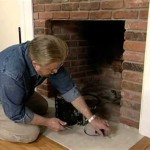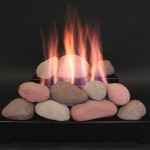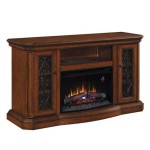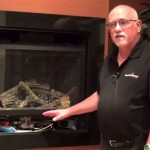Here is an article focusing on wood-burning fireplace efficiency:
Understanding and Improving Wood-Burning Fireplace Efficiency
Wood-burning fireplaces, a historically central feature for home heating, continue to offer aesthetic appeal and supplementary warmth. However, their inherent design often leads to significant energy losses, reducing their overall efficiency. Understanding the factors influencing fireplace efficiency and implementing strategies to mitigate these losses is crucial for homeowners seeking to maximize heat output and minimize environmental impact.
Traditional open fireplaces operate at very low efficiencies, often estimated to be between 5% and 15%. This means that only a small fraction of the wood's energy content actually heats the room, while the majority escapes up the chimney. The primary reason for this inefficiency stems from several factors, including the large volume of air required for combustion, the continuous flow of warm room air that is drawn into the fireplace and up the chimney, and the incomplete combustion of wood, which releases unburned hydrocarbons as smoke.
Furthermore, the radiant heat produced by a fireplace primarily warms objects and surfaces directly in front of it. Air temperature changes are often minimal except in close proximity to the fire. The heat is not circulated effectively throughout the living space, leading to uneven heating and temperature stratification.
The draw of a fireplace, while necessary for combustion and smoke removal, also contributes significantly to heat loss. The chimney acts as a powerful vent, drawing in not only combustion air but also heated air from the room, which is subsequently exhausted outside. This process creates a negative pressure within the house, pulling in cold air from drafts around windows, doors, and other openings. This cold air infiltration further offsets the warmth produced by the fireplace, resulting in a net loss of heat.
Factors influencing wood-burning fireplace efficiency extend beyond the fireplace design itself. The type of wood burned, its moisture content, and the method of burning all play critical roles in determining how much heat is generated and how efficiently it is utilized. Burning improperly seasoned wood, for instance, reduces heat output and increases creosote buildup in the chimney, which can lead to fire hazards.
Optimizing Wood Selection and Preparation
The type and quality of wood used in a fireplace directly impact its efficiency and the overall heating experience. Hardwoods, such as oak, maple, and ash, are denser and burn longer and hotter than softwoods like pine and fir. This density difference translates into a greater energy content per unit volume, making hardwoods a more efficient fuel source for fireplaces.
Moisture content is another crucial factor. Green or freshly cut wood can contain up to 50% water by weight. Burning wet wood requires significant energy to evaporate the water before it can ignite and release heat. This energy expenditure reduces the heat output of the fire and contributes to incomplete combustion, resulting in more smoke and creosote. Properly seasoned wood, on the other hand, has a moisture content below 20%. Seasoning typically involves splitting the wood and stacking it in a well-ventilated area for at least six months to a year. The drying process allows the moisture to evaporate, making the wood easier to ignite and burn more efficiently.
Proper wood storage is also crucial. Wood should be stacked off the ground on pallets or other supports to allow for air circulation and prevent moisture absorption from the ground. Covering the woodpile with a tarp or shed roof can further protect it from rain and snow, ensuring that it remains dry and ready for burning. The size of the wood pieces also affects efficiency. Smaller pieces ignite more quickly, while larger pieces burn more slowly and steadily, providing a longer-lasting heat source. A mix of sizes is often ideal for starting a fire and maintaining a consistent burn.
Implementing Fireplace Inserts and Modifications
One of the most effective ways to improve the efficiency of a wood-burning fireplace is to install a fireplace insert. A fireplace insert is a self-contained firebox that is inserted into the existing fireplace opening. Inserts are typically made of cast iron or steel and are designed to burn wood more efficiently than traditional open fireplaces. They often feature airtight doors and controlled air intake, which allows for more complete combustion and reduces the amount of heat lost up the chimney.
Fireplace inserts can increase heating efficiency to as high as 70-80%, significantly reducing heating costs and improving overall comfort. Many inserts also include features such as blowers that circulate heat throughout the room, further enhancing their effectiveness. When selecting a fireplace insert, it is important to choose a model that is appropriately sized for the fireplace opening and that meets relevant safety standards. Professional installation is recommended to ensure proper venting and operation.
Another modification that can improve fireplace efficiency is the installation of a glass door. Glass doors help to reduce the amount of air that is drawn from the room and up the chimney, minimizing heat loss. They also prevent sparks and embers from escaping the fireplace, improving safety. When using glass doors, it is important to ensure that they are properly sealed and that the fireplace is adequately ventilated to prevent carbon monoxide buildup.
Closing the damper when the fireplace is not in use is crucial for preventing heat loss. An open damper allows warm air to escape from the house, even when there is no fire burning. A properly functioning damper should create a tight seal when closed, minimizing airflow and reducing heat loss. Inspecting and maintaining the damper regularly is important to ensure that it is working effectively. Top-sealing dampers, which are installed at the top of the chimney, provide a more airtight seal than traditional throat dampers and can further reduce heat loss.
Optimizing Burning Practices and Maintenance
The manner in which a fire is built and maintained also influences its efficiency. The top-down burning method, where the fire is started at the top of the wood pile and burns downward, can improve combustion efficiency and reduce smoke production. This method allows the gases released from the wood to burn more completely, resulting in less unburned fuel being released into the atmosphere.
Regular chimney cleaning is essential for maintaining fireplace efficiency and safety. Creosote, a flammable byproduct of wood combustion, can accumulate in the chimney over time, increasing the risk of chimney fires. A professional chimney sweep should inspect and clean the chimney at least once a year, or more frequently if the fireplace is used regularly. Removing creosote buildup improves airflow and reduces the risk of fire.
Ensuring adequate air supply is also important for efficient combustion. While airtight doors and controlled air intake can improve efficiency, a sufficient amount of air is still necessary for the fire to burn properly. If the fireplace is not receiving enough air, the fire may smolder and produce excessive smoke. Opening a window slightly can help to provide additional air, especially in tightly sealed homes. Using a fireplace grate can also improve airflow around the wood, promoting more complete combustion.
Proper ash management is important for maintaining fireplace efficiency. Allowing ash to accumulate excessively in the firebox can reduce airflow and hinder combustion. Ash should be removed regularly, but a thin layer of ash can actually help to insulate the firebox and reflect heat back into the room. It’s important to dispose of ashes safely, placing them in a metal container with a tight-fitting lid and storing them away from combustible materials.
In conclusion, maximizing the efficiency of a wood-burning fireplace requires a multifaceted approach that encompasses wood selection and preparation, fireplace modifications, and optimal burning practices. By implementing these strategies, homeowners can significantly improve the performance of their fireplaces, reduce heating costs, and minimize their environmental footprint, ensuring that their fireplaces provide warmth and enjoyment for years to come.

Energy Efficient Wood Burning Fireplaces

Superior Wct6940ws High Efficiency Wood Fireplace Fine S Gas

Our S High Efficiency Fireplaces Valcourt

Efficient Wood Burning Stoves Fireplaces Efficiency Vermont

5 Efficiency Tips For Wood Burning Stoves Grand Designs

What Type Of Stove Is The Most Efficient Free Standing Service

High Efficiency Wood Stove Epa Approved

Keys To Make Your Wood Stove More Efficient Panadero

How To Improve Your Wood Stove S Efficiency

The Alliance For Green Heat Best Clean Stoves
Related Posts








